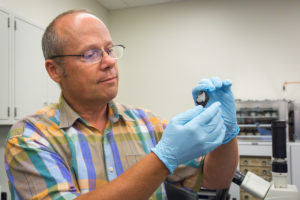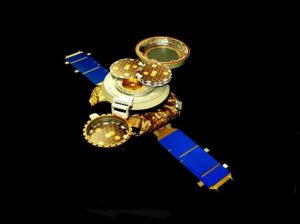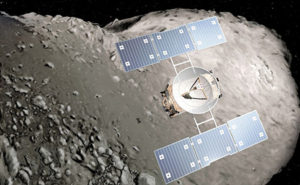Current Research

Research Professor Laurence Garvie’s work focuses on high-spatial-resolution microscopic studies of the primitive chondritic meteorites as a means of understanding the physical and chemical processes that resulted in the formation of the Solar System. His particular field of interest is the relationship between organic and inorganic components in the carbonaceous chondrites, which can shed light on the abiotic processing of organic matter in the early Solar System.

Assistant Research Professor Amy Jurewicz’s research currently focuses on measuring Fe and Mg abundances in the bulk solar-wind, utilizing solar-wind collector materials returned to Earth by the NASA Genesis mission. She is additionally working with members of the Genesis Science team and the Johnson Space Center Genesis curatorial staff on a variety of other tasks, including technique development and standardization, sample surface preparation, and outreach activities. Solar-wind samples are a good surrogate for the solar nebula because a preponderance of scientific evidence suggests that the outer layer of the Sun preserves the composition of the early solar nebula.
Asteroidal meteorites represent some of the most ancient solid bodies to have formed in the early history of the Solar System, approximately 4.56 billion years ago.

Assistant Research Scientist Jemma Davidson’s expertise includes the petrology and isotope chemistry of carbonaceous chondrites (including CM, CO, CR, CV, CK, and ungrouped carbonaceous chondrites), interplanetary dust particles, and their organic and presolar grain components. She also studies ordinary chondrites and Hayabusa-returned particles from asteroid Itokawa. Her research aims to identify and characterize primitive early Solar System samples to aid understanding of the material from which small bodies formed, and to then trace changes in this material as a result of pre- and post-accretionary processes to understand asteroidal evolution in the early Solar System.
We are also investigating various short-lived and long-lived radiogenic isotope systems in several classes of differentiated meteorites, such as primitive achondrites, and the HED group meteorites (believed to have originated on the asteroid 4-Vesta), to precisely determine the timing of silicate differentiation and core formation on asteroidal bodies in the early Solar System.